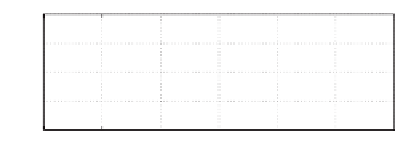Environmental Engineering Reference
In-Depth Information
4
i
R
i
S
i
T
2
0
−2
−4
−0.06
−0.04
−0.02
0
0.02
0.04
0.06
Time [s]
(a) Three-phase currents
,
and
of the inverter to generate the neutral current
4
i
C
i
L
i
N
2
0
−2
−4
−0.06
−0.04
−0.02
0
0.02
0.04
0.06
Time [s]
(b) Neutral current
, capacitor current
and inductor current
4
V
ave
2
0
−2
−4
−0.06
−0.04
−0.02
0
0.02
0.04
0.06
Time [s]
(c) Neutral point shift
Figure 13.11
Transient response when the resistive load was changed from
R
B
=
6
to
R
B
=∞
with
R
A
=
R
C
=
6
the tracking performance of the controller is significantly improved and the variation of the
neutral point is reduced.
13.4.2 Transient Response to Changes in the Neutral Current
The transient response of the controller
C
7
was tested when the resistive load connected to the
three-phase inverter was changed from
R
B
=
6
to
R
B
=∞
with
R
A
=
R
C
=
6
at time
t
=
0 s. The results are shown in Figure 13.11. It only took one cycle to settle down.
13.5 Summary
Based on (Hornik and Zhong 2011b), a control strategy is presented to force the neutral
current of a neutral leg to flow through the inductor instead of the capacitors so that the neutral
point is maintained as stable and balanced for an inverter, even when the neutral current is
large. The strategy takes the form of a voltage controller and a current controller connected
in parallel connection because their functions are decoupled in the frequency domain. The









































Search WWH ::

Custom Search